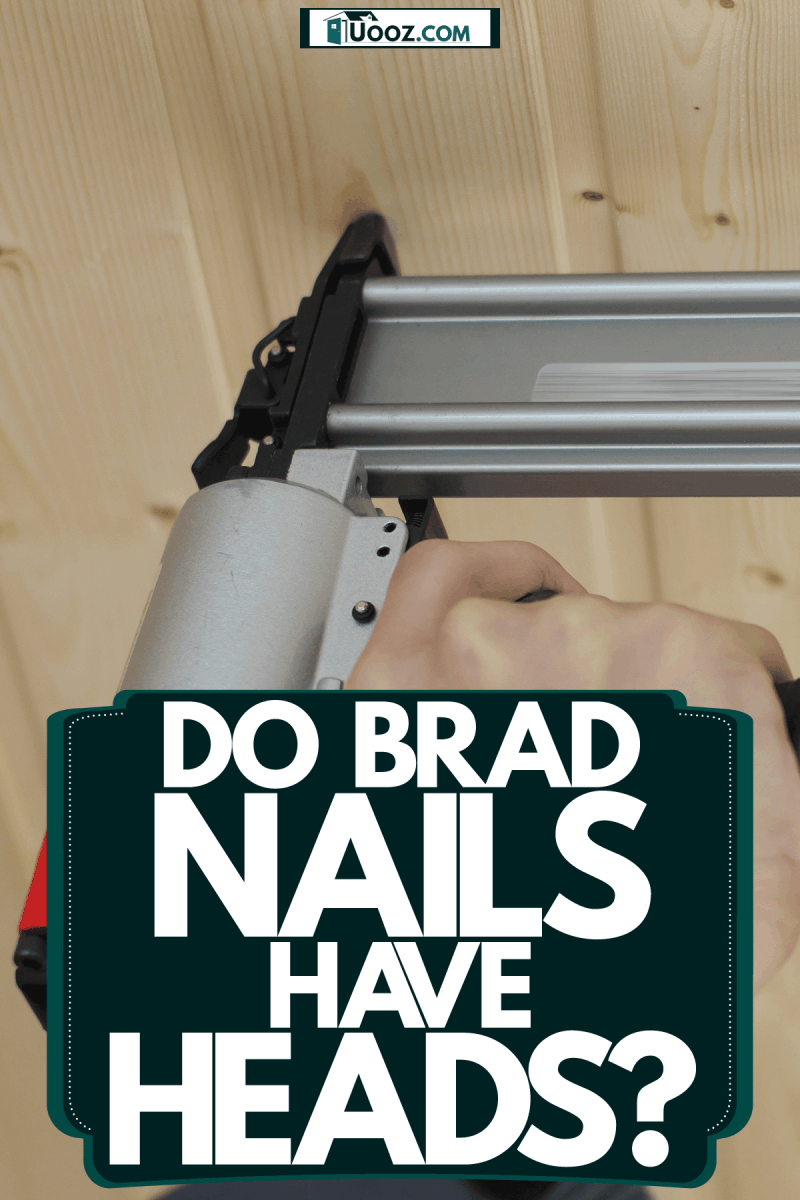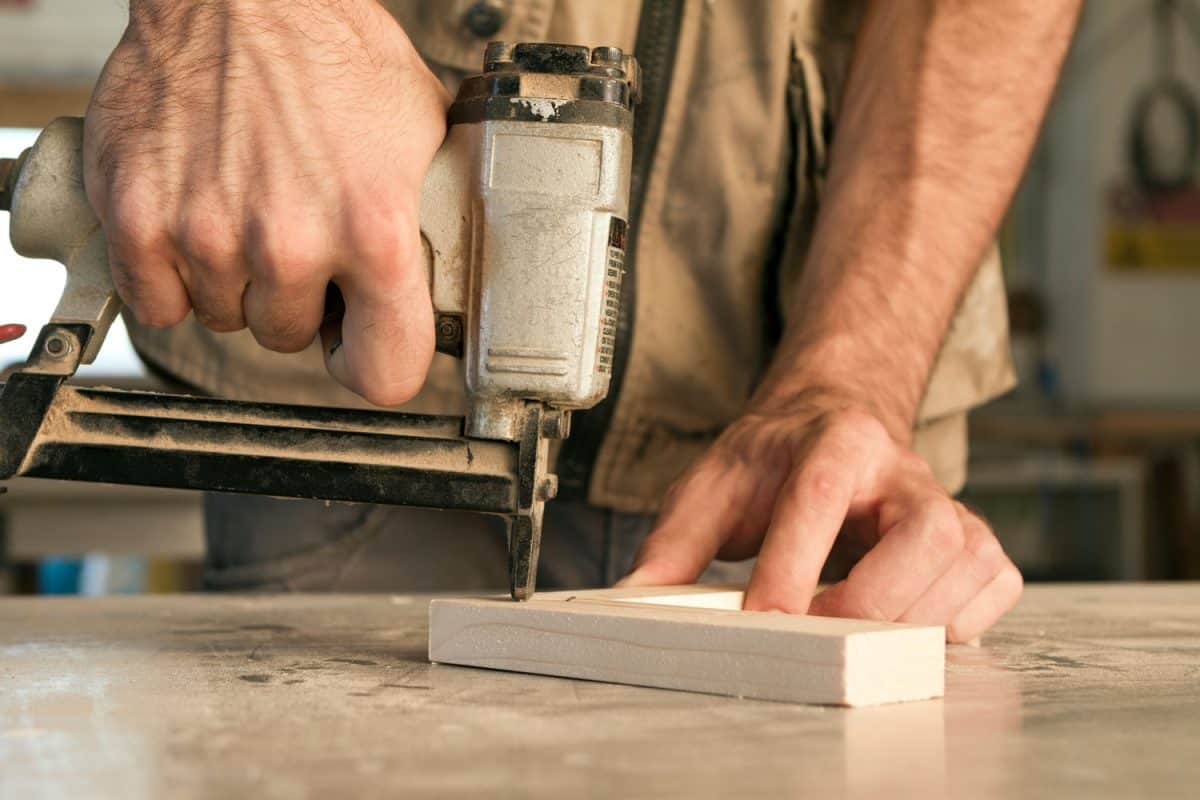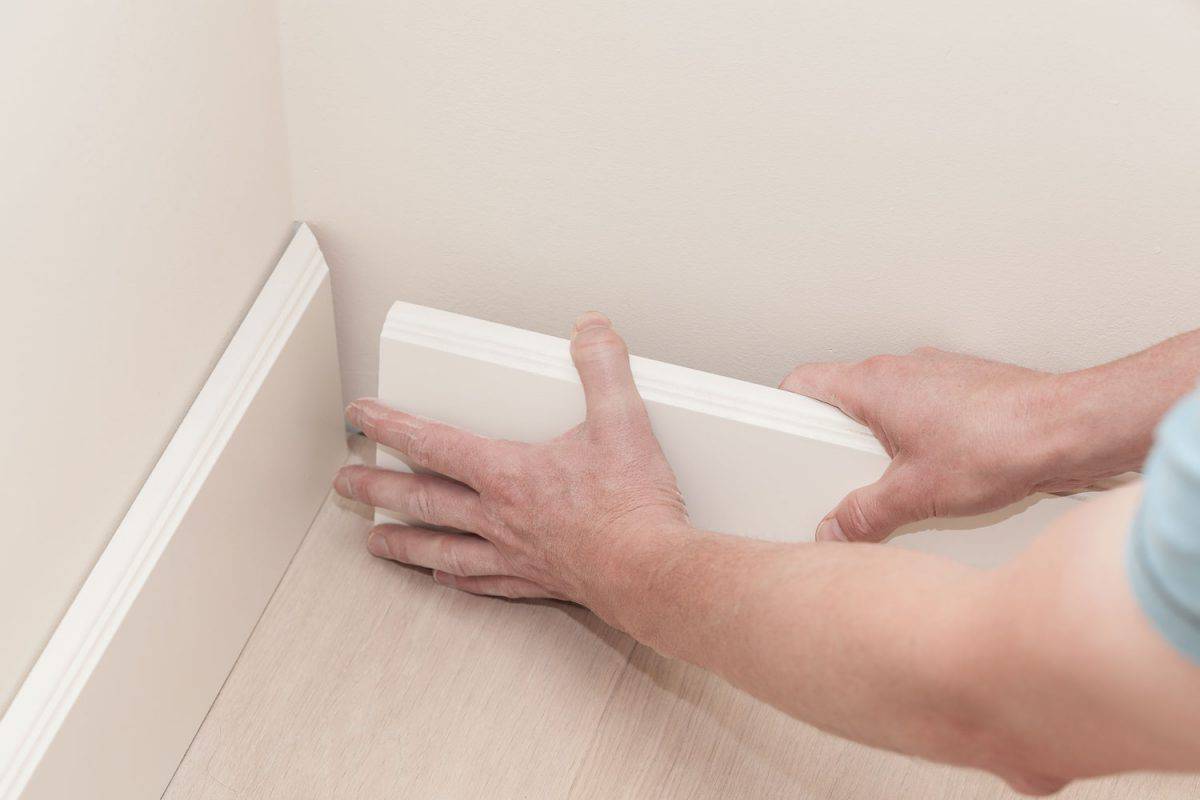Remodeling your home or making repairs in certain areas means working with different types of nails. Brad nails are fairly common for home improvement projects. These nails can provide sufficient support and can be applied quickly by using a nailer gun. But do brad nails have heads? We've researched the answer to this question, and in this post, we will answer it for you.
The brad nail head is flush it its body. However, they aren't ideal for hammering applications, as they're prone to bending due to their narrow width and longer length. This is why they're typically only used in nailer gun applications. The most common gauge for brad nails is 18, which means that the nail's head is 1/18 inches in diameter.
Brad nails can be used for a variety of different home repair and building applications. However, they're often confused with finishing nails, which are similar but different in many aspects. Continue reading to learn about the best ways to use brad nails and how they differ from finishing nails.

What are Brad nails good for?
Brad nails are preferable if you're attaching thin trim, molding, or other light wood surfaces. They can also be helpful when installing new carpets and various woodwork projects.
Let's take a look at some of the advantages and disadvantages of using brad nails.

Advantages
They leave fairly small nail holes in wood
The gauge of these nails is so thin that you'll barely notice the holes left in the wood. However, this doesn't mean that you may not need to apply a wood filler or putty in some circumstances. But for the most part, the holes are barely noticeable.
They don't split wood
The thin frame of these nails makes them easy to apply to shallow or delicate wood surfaces, which is why they're perfect for trim and thresholds. They're also great for shelving and thin carpeting applications.
They work well for glue applications
If you need to glue two pieces of wood together for a furniture project for everyday home repair, brad nails work perfectly as a temporary fastener. You can easily remove these nails with pliers, and you don't worry about damaging the wood when you apply the nails. And, of course, you barely see the nail holes once they're removed.
It can be applied quickly
If you've ever seen a nail gun in action, you'll understand how quickly these nails can be applied. If you're working on a large project with a lot of wood structures, brad nails can be applied in minutes. A nail gun can typically install anywhere from 7 to 10 nails per second. Loading a brad nailer is fairly easy. It also saves time and is easier on your back and hands.
![Brad nails on white background, How To Hide Brad Nail Holes [4 Basic Steps To Follow]](https://uooz.com/wp-content/uploads/2021/08/Brad-nails-on-white-background-1200x801.jpg)
Disadvantages
Better for smaller pieces of wood
While brad nails are commonly used for several applications, they're not exactly ideal for joining large structures. For example, they don't fare particularly well with fig plywood, MDF, or large pieces of hardwoods--such as mahogany. If you're working with larger pieces of wood, it's usually best to use a finishing or other type of nail instead to guarantee more security.
Not ideal for tight spaces and crevices
If you're installing nails and spaces that are tight or hard to access, brad nails may not be ideal. For example, this may include interior furniture builds, door casings, or cabinetry making.
Not useful or large surfaces
Brad nails typically shouldn't be used to piece large structural pieces of metal or wood together. In fact, some building codes will specify the type of nail that you're to use for specific areas such as decks, walls, roofs, and staircases. You'll be pressed to find brad nails listed as the recommended nail type.
Can I use a brad nailer for baseboards?

Yes. You can use a brad nailer for baseboards. In fact, it's one of the most commonly used tools for baseboards. Not only does a nailer allow you to install baseboards quickly with nail accuracy, but it makes the task much less laborious, given that you're on your hands and knees the entire time.
Also, brad nailers are great for thin wood applications, so even the thinnest wood panel or trim work can be fastened using a brad nailer. One of the biggest benefits of a brad nailer is its strength and ability to serve as an alternative to glue applications. It's a convenient tool to consider if you're working on a wood project with trim components or other pieces that don't contribute directly to the structural integrity.
Can you use a brad nailer for framing?
It's generally not recommended. A framing nailer is typically recommended for this task. These nailers are pneumatic tools that can generate up to a thousand pounds of hammering power. This is needed to drive the heavy nails into a building or home's wood or metal joists. Brad nailers are typically used for lighter applications.
A framing nailer, similar to a brad nailer, not only increases productivity but makes nail installation much less laborious. This air power tool can deliver multiple nails in a matter of seconds, and it's suitable for all kinds of fasteners, such as finishing and deck nails.
Click here to see this framing nailer on Amazon.
Best brad Nailers
Looking for a new brad nailer for your home repair jobs? Let's take a look at some of the best ones on the market today.
Bostitch BTFP12233 Smart Point 18GA Brad Nailer Kit
This reliable and super-efficient nailer is one of the best power tools that you can have in your arsenal. If you work in home-building or prefer to do your own minor repair jobs at home, here's a nail tool to consider.
This nailer includes 18-gauge fasteners and has a useful jam-release mechanism that makes it easy to clear even the smallest lockup. It also includes an easy-to-use control knob that helps you determine the proper placement of the nails. You don't have to worry about this nailer staining your work surface, as its muzzle is made with an oil-free design. It also includes a convenient carrying case and assembles fasteners.
Read more details about this nailer on Amazon.
Hitachi NT50AE2 18-Gauge
Here's another powerful nailer that can get the job done. It also includes a jam-clearing assistant, and its lightweight of only 2.2 pounds makes it suitable to use on large jobs. You can easily adjust the drive depth with a simple turn of the control knob, and you can choose one of two different fire modes to suit your nail application. Also, don't worry about it slipping out of your hand as it comes with an elastomer handgrip, which makes it easy to hold for long periods.
Check out this nailer on Amazon.
WEN 61721 Pneumatic Brad Nailer 18-Gauge
This brad nailer comes with a spring loading magazine that makes reloading an easy and quick process. It can hold up to a 106, and its super light bodyweight makes it easy to hold for extended periods of time. This nailer operates at a pressure range of anywhere from 60 to 115 PSI, and its nail firing depth can be adjusted per application. Consider this one for your next project if you're looking for a nailer that can work well on thicker trim pieces.
Check out this nailer on Amazon.
Can I brad nail into drywall?
You can, but it's generally not recommended. The reason is that the head of brad nails is simply too narrow. The nail's head will too easily penetrate the drywall surface and probably tear the surrounding paper. It's best to use finishing nails for drywall, as they have wider heads and will stay in place after they're applied.
Check out this finish nailer kit on Amazon.
What is the difference between Brad and finishing nails?
To make things simple, the big difference between finishing and brad nails is holding power. Finishing nails have more holding power, which is why they're used for larger applications such as installing metal or wood joists. Brad nails are typically used for small jobs such as trim, cabinetry, baseboards, threshold, and other thin wood surfaces — which accounts for their lighter tensile strength.
Read more: How Strong Are Brad Nails?
Can you use a hammer for Brad nails?
Using a hammer to install a brad nail can cause frustration due to the ease at which the nail will bend. Brad nails are typically installed using a nail gun. Hammers are best on nails with a wider head such as sink, deck, box, common, roofing, and drywall nails.
Read more: How To Drill Into Basement Walls
Find this pack of common nails on Amazon.
Wrapping Things Up
We hope this post has helped provide understanding about brad nails and where they work best. Remember, it's always helpful to know the best nail to use for your specific woodwork or building application.






